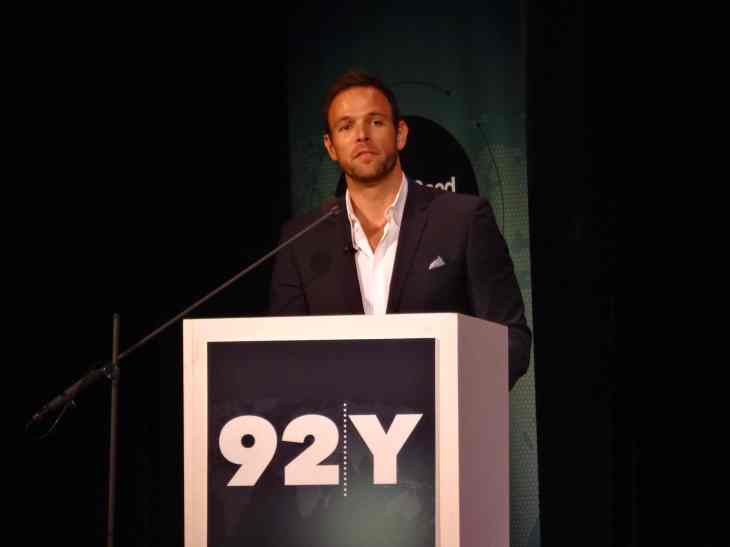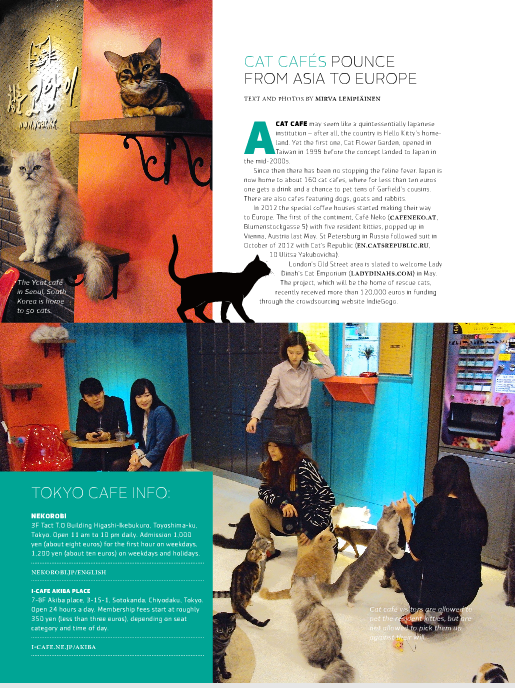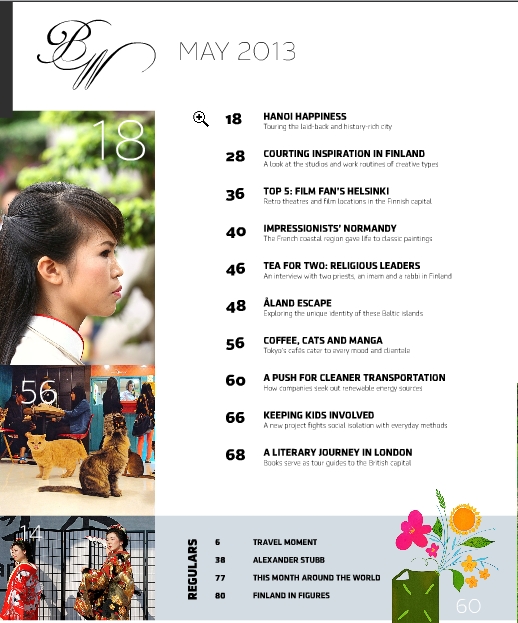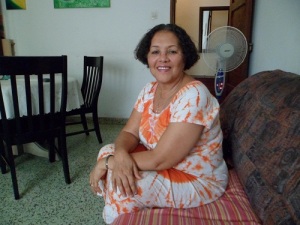Over the past four years Finnair’s in-flight magazine Blue Wings has been one of my main clients. I’ve written all kinds of articles for them, ranging from monthly travel news blurbs to longer features. Thus I thought I’d share one of my favorite articles that I have ever written for them. (To see the original layout, go here and scroll to page 20.) This is is about all the subway artists that are working so hard in the tunnels of New York, and are making commuting more fun for others in the process. 🙂 (And sure, there are always some people who are annoyed at these musicians and dancers as they bring noise to the subway car. But you can’t deny that some of these guys are crazy talented!)
Category / My English Articles
My Guadeloupe e-book is finally DONE!
It’s official! The Quick Gwada Guide e-book is finished! After six weeks of hard full-time work and a bucketload of joy and exhaustion … It’s finally done!! Yayyyyy. 🙂
If you are traveling to Guadeloupe with the new, cheap Norwegian flights from the US (or from elsewhere) and are interested in getting ideas for where to stay in Gwada, finding out the top 30 best things to see and do here, plus want to get answers to common traveler questions (What’s the seaweed situation like? Is it easy to find wifi? What should I bring with me? What if I don’t speak French?), this e-book is for you! It’s the first English-language guidebook about Guadeloupe written since the year 2000, so you literally cannot find more up-to-date information anywhere and in as concise of a format. (The e-book is 63 pages, but it’s easy to scroll to the sections that are most useful to you.)
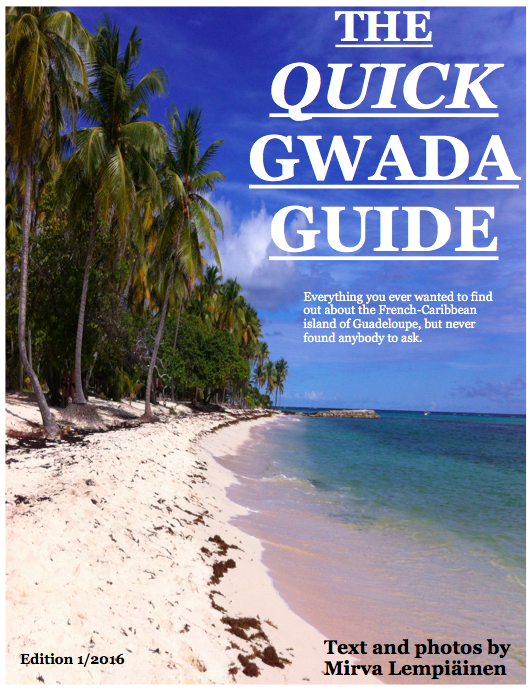
Here are some things that buyers have said about this e-book so far:
“I finished your book. It is absolutely excellent. This had to be a LOT of work for you, and I congratulate you on the result!” (Writer’s note: Yes, it was more work than I ever thought!)
“It is really, really good and I think it will be super helpful for first-time visitors! It would be really nice if Norwegian would put your guide in the seatbacks on all flights to Gwada!”
“Very helpful book. I will take the time to offer some feedback after returning from Guadeloupe.”
“I just wanted to thank you for all your guidance and friendliness. It contributed to a wonderful maiden journey to Guadeloupe!”
“Mirva, thanks so much for the guide. You are like the Rick Steves of Guadeloupe. If you publish your guide on Amazon or anywhere else, I’d be glad to give you a positive review.“
“Thank you so much! We got a lot of use out of your book.”
So yes, sounds like my guidebook has pretty much nailed it! And indeed, Amazon is the step I need to tackle next so that I can reach a bigger audience with this book. Another good contact could be the Guadeloupe tourist board and their new website. So much to do!
In the meantime, if you are interested in the Quick Gwada Guide, feel free to email me at gwadaguide@gmail.com to order a PDF copy. Based on reader reviews, it prints without any issues and can easily be read at least on the Amazon Kindle Fire.
The price of this e-book is $15 (thus a mere 23 cents per page!) and you will definitely save that money several times over if you invest in this guide. After all, I’m a budget traveler myself so I’ve included tons of tips for saving money while in Gwada, as well as a list of the top things to do here, many of them free or low-cost.
Payment is easiest done via Venmo or Paypal, using the email address of gwadaguide@gmail.com, but we can discuss other ways to pay if you aren’t familiar with those. Please leave your email address as a comment when you make the payment, so that I’ll know who to send the e-book to!
SEE YOU IN GUADELOUPE!

Want to be a travel writer?
Are you an aspiring travel writer or would you just like to know what life is like when the whole world is your office? Click here to read the article I wrote about the ins and outs of travel writing for 219 Magazine, published by my alma mater CUNY (The City University of New York Graduate School of Journalism).
The article can also be read in a different format on Medium.com.
Hope you like it and find it useful!
Inspiration and desperation at the Social Good Summit and Global Citizen Festival in New York
Last week was truly something else – I learned more than I ever dreamed possible about various problems currently affecting the world: extreme poverty, funky-sounding but terrible tropical diseases like hookworm, global warming, infant mortality, malaria, lack of education for girls…. Phew! Needless to say, my brain was running on information overload after receiving all of this info from two NYC events: the three-day Social Good Summit held at the 92Y, and the one-day Global Citizen Festival in Central Park. These happenings were the source of a lot of inspiration (extreme poverty is on its way out!), but also desperation: so much to do, so little political will to do it!
I attended the Social Good Summit, organized by the UN Foundation and Mashable, mostly to report on the latest climate change news for The Interdependent.com. To read my article on how social media is playing a role in the fight against global warming, click here.
During these two eye-opening events I also saw a ton of celebrities, like Al Gore, Alicia Keys, Will.i.am, the drummer and bassist of Linkin Park, George W’s daughter Barbara Bush and my favorite reality TV star, Ernesto Arguello from NBC’s short-lived show Ready for Love. I even got a photo taken with him! 🙂
 Arguello, who is a “humanitarian entrepreneur” according to his Twitter account, spoke at the summit because of something you see in this photo. The yellow belt he is wearing is the symbol of Snap2Live, a “life-saving fashion statement” campaign that promotes seat belts and traffic safety. Sadly enough, car crashes are currently the leading reason of death for children worldwide. Someone dies on roads every 6 seconds: a million of the victims are children. With 70 percent of its profits going to the Road Safety Fund, Snap2Live supports the UN’s “Decade of Action for Road Safety.”
Arguello, who is a “humanitarian entrepreneur” according to his Twitter account, spoke at the summit because of something you see in this photo. The yellow belt he is wearing is the symbol of Snap2Live, a “life-saving fashion statement” campaign that promotes seat belts and traffic safety. Sadly enough, car crashes are currently the leading reason of death for children worldwide. Someone dies on roads every 6 seconds: a million of the victims are children. With 70 percent of its profits going to the Road Safety Fund, Snap2Live supports the UN’s “Decade of Action for Road Safety.”
Discussing new energy initiatives are singer Will.i.am and Jessica O. Matthews, CEO of Uncharted Play. They spoke at a panel called “Sustainable Energy and Global Youth: Making a Complex Issue Fun and Accessible for a Measurable Difference.” After having been kicked around for 30 minutes, the ball that Matthews designed can generate up to three hours of electricity.
Linkin Park’s bassist Dave Farrell was at the Social Good Summit to to promote “Recharge.” This new climate change-influenced videogame is part of the band’s “Power the World” campaign, which supports the UN’s Sustainable Energy for All initiative.
Al Gore, the former U.S. vice president, revealed his latest campaign, “What I Love,” a multimedia exhibit that makes climate change a personal matter. The site lets you choose things you couldn’t live without and explains how those things are threatened by global warming.
On Saturday, a few days after the Social Good Summit ended, some 60,000 New Yorkers and visitors attended the Global Citizen Festival in Central Park. Here I am with my friend Faviola, who scored us two of the free concert tickets given through the website. The fundraising day featured a collection of well-known artists: Kings of Leon, Alicia Keys, John Mayor and Stevie Wonder. We were all the way in the back and could only see the performers as ant-size on stage, but it was still good times for a great cause!
Did you by any chance attend the Social Good Summit and/or the Global Citizen Festival live or via the Internet? What did you think?
Young Professionals – the United Nations Needs You!
Are you young and ambitious? Have you always dreamed of working for the United Nations in exotic lands but just didn’t know how to go about scoring a job with the mighty international organization? Here’s your chance!
The application period for the Young Professionals Programme (YPP) and its annual entrance examination starts today! If you are 32 or younger this year, hold at least a bachelor’s degree and hail from one of this year’s 63 participant countries, you are in luck. Between now and August 2, you can submit your application to be considered for jobs in administration, finance, legal affairs, public information and statistics.
To learn more about what you may be getting yourself into, check out my article on the YPP program that I wrote a few months ago for the UN-centric website Passblue.com. And good luck!
Have you applied for the YPP program before or are you planning on applying now?
Weekly Wednesday Video: Speedboating in Nicaragua
As I promised last week, I’ve started a new Weekly Wednesday Video series and today just happens to be… Wednesday! Yay. 🙂
This week’s video is from Nicaragua, where I spent six weeks this winter with my friend (who was very sleepy). While most of my time there I was trying to catch up with overdue work, relax and enjoy the beaches, I also cranked out an article about Nicaragua’s sky-high teenage pregnancy rate for Passblue.com, a site focused on all things related to the United Nations. Would you believe that half the Nica youth have babies before they turn 20? That’s the record rate for all of Latin America.
This was yet another piece that I reported in Spanish, which is obviously more difficult for me than English or Finnish but still about ten times easier than doing the same in Portuguese Creole (as was detailed in my post last year, titled: The Worst Interview of My Life). So yeah, in the end all went well and the article turned out fine and dandy.
Anyhow, one of the coolest – and often only – ways to move around Nicaragua’s Caribbean coast is with a panga – a commuter speedboat. This video footage was shot on two separate trips from Bluefields to Pearl Lagoon and vice versa. The ride lasted about an hour and cost $5. And boy was it fun! Those things go fast. I felt like my cheeks were wobbling in the wind the whole time! If you don’t believe me, take a look at this week’s video (accompanied by music from my very talented brother Erkka).
If anyone is planning on traveling to the Caribbean coast of Nicaragua, I highly recommend checking out the RightSide Guide website, a survival guide for the wild west that awaits you. And make sure to travel with as many pangas as possible!
Have you been to Nicaragua and/or tried out the speedboats there? What did you think?
Weekly Wednesday Video: Korean cat cafe
I was poking around my external hard drive the other day when I realized that I have about a gazillion short bits of video footage just sitting in a folder. These are snippets I’ve shot on my travels all over the world, in hopes of one day doing something with them. Some of them have been waiting to see the light of day for months, others for years.
Well, that day is here. I’m starting a new blog series called the Weekly Wednesday Video. So every Wednesday I’ll be posting a short travel video of mine, shot in some random country.
The first flick comes from South Korea and features a cat cafe that I visited last October. It basically shows you what it’s like inside this cafe that is home to 50 cats. As you’ll see, sometimes tension builds up between the furry residents. My apologies for the quick moving camera work in the end of the video – I just wanted to give everyone a better idea of the decor of Y-Cat cafe in Seoul, Korea.
The video is actually pretty timely right now, as my article about the history of cat cafes is out in the May issue of Blue Wings, Finnair’s in-flight magazine. (Well, more than an actual article, this is a short side bar to someone else’s piece that talks about Japan’s cafe culture. But nonetheless.) If you view the video, you’ll surely recognize some of the cats that make an appearance in these Blue Wings photos as well.
In case you are interested in reading the article and can’t squint your eyes enough to make sense of the tiny print (can’t blame you!), here it is:
CAT CAFES POUNCE FROM ASIA TO EUROPE
TEXT AND PHOTOS BY Mirva Lempiäinen
A cat cafe may seem like a quintessentially Japanese institution – after all, the country is Hello Kitty’s homeland. Yet the first one, Cat Flower Garden, opened in Taiwan in 1998 before the concept landed to Japan in the mid-2000s. Since then there has been no stopping the feline fever. Japan is now home to about 160 cat cafes, where for less than ten euros one gets a drink and a chance to pet tens of Garfield’s cousins. There are also cafes featuring dogs, goats and rabbits.
In 2012 the special coffee houses started making their way to Europe. The first of the continent, Café Neko (www.cafeneko.at, Blumenstockgasse 5) with five resident kitties, popped up in Vienna, Austria last May. St Petersburg in Russia followed suit in October of 2012 with Cat’s Republic (en.catsrepublic.ru, 10 Ulitsa Yakubovicha). London’s Old Street area is slated to welcome Lady Dinah’s Cat Emporium (LadydinaHs.com) in May.
The project, which will be the home of rescue cats, recently received more than 120,000 euros in funding through the crowdsourcing website IndieGogo.
(You can also read the entire article about Japan’s cafe culture and my cat cafe history sidebar by clicking here and scrolling to page 56.)
My Weekend with Senegalese Subsistence Farmers
“So how was Africa??”
Ever since flying out of Senegal in May, not a week has gone by that I haven’t heard this question and soon been retelling my African roadtrip stories to some friend or acquaintance. Nowadays I feel like I’m starting to sound like a broken record since I already know what memories I want to share and what aspects of the experience I’ll focus on. Not that it’s been easy narrowing my four months down to a few short tales, quite the contrary!
Still, one of my favorite stories to tell is how I spent a weekend visiting a tiny rural village in Senegal’s Casamance region – a town that did not have a single toilet, not even of the hole-in-the-ground variety. Instead there was a tree behind which you had to go in times of need, and little piglets roaming around eating the leftovers. Magically it was one of the cleanest toilet arrangements I encountered on the continent.
The most memorable part of the weekend in Bouyouye was going oyster fishing with a few of the village ladies. 

The trip made such an impression on me that I even wrote a story about it for Passblue.com, the same website that recently published my article about the new Cabral museum in Guinea-Bissau. Should you want to learn more about life in rural Senegal, check out this link:
http://passblue.com/2012/07/25/in-rural-senegal-oyster-fishing-is-not-a-hobby/
But even if you are not in the mood for reading the longish piece, don’t miss out on watching this video of a dance party that took place in the village on my last night there. There was really no special occasion for the fiesta nor was it planned at all- one of the guys just started playing his kora (a small guitar-like African instrument) and suddenly the whole village came out to jam. It was quite the scene and this is what went on for hours:
Wow! I was looking at the goings-on with a mix of awe, amazement and a hint of jealousy. If only I had such rhythm in my blood! Unfortunately my efforts to copy these ladies’ styles looked pretty pathetic, so I left myself out of the video. 😛
Altogether if I had to choose one weekend that has had the most profound effect on me this year, this just might be it. While in Bouyouye, I started thinking about what’s really important in this life and questioning our modern world where nobody has time for an impromptu dance party anymore.
Visiting the village made me want to simplify my life even more, and to make time for meaningful human interactions. And it made me less understanding of people who choose to work a 70-hour work week just to make more money to buy more useless material things. I’ve never seen houses more bare than the ones in Bouyouye, but I’ve also never seen happier people. Somehow I feel like there must be a connection… don’t you think?
Have you ever visited this type of a rural village? Did it have as profound of an effect on you as my visit to Bouyouye did on me?
The Worst Interview of My Life
As you may have read from the last post, I spent more than three weeks in tiny Guinea-Bissau during my Great West African Tour of 2012 (four months, five countries, two occupied territories – surely the name of my trip is not much of an exaggeration?). 🙂
Besides liking Guinea-Bissau a whole lot, one of the reasons I stayed there for some extra time was that I was reporting on a new museum that is opening up soon. It’ll honor freedom fighter Amilcar Cabral, Africa’s “Che Guevara,” who fought for the independence of his home countries of Guinea-Bissau and Capo Verde in the 1970s. The museum is housed in Cabral’s childhood home in the town of Bafata, which was recently renovated by UNESCO.
I visited the museum and wrote the story for Passblue.com, a website that reports on issues related to the United Nations. The article can be read here and I’d love for all of you to check it out! After all, this piece was very challenging to complete, so please show it some looooove. ❤
Why was it so hard, you may ask… Well, mostly because I don’t speak Portuguese Creole, the official language of Guinea-Bissau. And people there don’t speak much English. So there was a bit of a communication barrier…
But one language I do speak fairly well is Spanish, and many Bissau-Guineans can also communicate in Portuguese. So rather than spending time (and money) looking for a translator, I decided to try to somehow manage on my own.
So I traveled to the town of Bafata, organized some interviews, went over to meet the people of UNESCO, called the governor of Bafata, and dug up some relatives of Cabral and thought everything would just be smooth sailing from there on…
And boy, was I wrong.
It didn’t take me long to figure out that speaking Spanish does not equal understanding Portuguese, no matter how closely related the two languages supposedly are. And understanding Portuguese Creole is next to impossible, as at times it sounds nothing like the language it’s based on.
This was painfully evident during my interview with Amilcar Cabral’s niece, Iva Helena Gomes. I’d ask her a question in Spanish and then she’d give a great, long-winded answer in Portuguese (and/or Portuguese Creole), detailing the complex life story of her uncle… and I’d understand about 1/10 of each sentence, if even.
Every time the friendly lady spoke, it felt like a knife was being twisted in my stomach.
“This is the worst interview I’ve ever done, without a doubt,” I thought to myself as she went on in a language that might as well have been Chinese. I was totally lost, no matter how much I tried to search for familiar words. I have never left less in control of an interview.
In the end I had scribbled down just a few words out of the entire 30-minute interview. It was a sad, sad day. I left Gomes’ house without any spring in my step. Only a bit of panic in my heart. (“How can I write this story without any good quotes??”)
My interview with Bafata Governor Adriano Gomes Ferreira was also not the greatest of all times. Despite knowing Spanish, he would occasionally shift to Portuguese without even realizing it.
It was only during a lunch meeting in the governor’s house that the conversation got a bit easier. I think at that point the guv and his wife finally realized the limits of my Portuguese… Well, better late than never. 🙂
Luckily my other interviews went better, as they were conducted in proper Spanish and one even in English. So at least I learned I feel comfortable reporting in Spanish, but that I already knew from last year when I covered an HIV march in Guatemala City.
In the end the Cabral article turned out fine and I managed to work around my limited quotes. The editor of Passblue.com, Dulcie Leimbach, certainly seemed to like the outcome based on her email.
“I’m impressed you could use your Spanish so well in a Portuguese country. You deserve a Pulitzer!”
Well, thanks Dulcie but I’d hold off on the Pulitzer Prize for now. 😉
And while I did okay, I can’t help but wonder how nice would it have been to be able to choose from 20 great quotes instead of using the only two I understood?
So note to self: Next time I am in a Portuguese-speaking country, I should definitely hire a translator! Spanish is not the same as Portuguese. 😛












